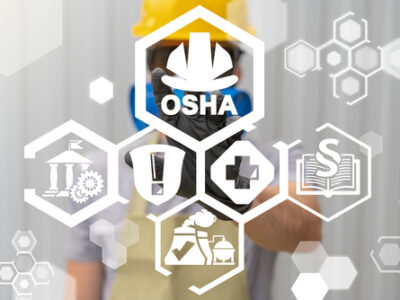 Crane inspections are a critical aspect of maintaining a safe and compliant work environment in industries that utilize cranes. The Occupational Safety and Health Administration (OSHA) has established strict standards and regulations to ensure the safety of workers and prevent accidents. In this blog post, we will provide helpful tips to ensure your crane passes inspections and meets OSHA standards.
Crane inspections are a critical aspect of maintaining a safe and compliant work environment in industries that utilize cranes. The Occupational Safety and Health Administration (OSHA) has established strict standards and regulations to ensure the safety of workers and prevent accidents. In this blog post, we will provide helpful tips to ensure your crane passes inspections and meets OSHA standards.
1. Regular Inspection and Maintenance Schedule:
Implementing a comprehensive inspection and maintenance schedule is paramount to meeting OSHA standards. Develop a routine maintenance plan that includes daily, weekly, monthly, and annual inspections. Regularly inspecting cranes and related components, such as wire ropes, hoists, sheaves, and gears, will help identify potential issues before they escalate into safety hazards.
2. Train and Certify Crane Operators:
OSHA requires that crane operators be trained and certified to operate these heavy machinery safely. Ensure that all crane operators receive proper training and certification through accredited programs. Regularly provide refresher training to keep operators up to date with the latest safety guidelines and techniques, as well as any changes in OSHA standards.
3. Conduct Frequent Load Testing:
Load testing your cranes is an essential part of ensuring their safe and reliable operation. Perform load tests at regular intervals to verify the crane’s maximum load capacity and detect any weaknesses or deficiencies in the equipment. Document load testing results and keep records readily available for inspection purposes.
4. Document Inspection and Maintenance Records:
Maintaining detailed and well-organized documentation of inspections and maintenance is crucial for passing crane inspections. OSHA inspectors will scrutinize these records to assess compliance with safety standards. Keep thorough records of inspection dates, findings, repairs, maintenance activities, and certification documents for both the crane and operators. Regularly review and update these records to ensure accuracy and usefulness.
5. Rigging and Lifting Devices:
Inspecting and properly maintaining rigging and lifting devices are vital components of crane inspections. Inspect and evaluate wire ropes, slings, hooks, shackles, and other lifting accessories for signs of wear, damage, or degradation. Promote proper rigging practices among operators and provide training to ensure correct use and inspection procedures.
6. Implement a Pre-Use Inspection Checklist:
Prior to each use of the crane, operators should conduct pre-use inspections to identify any potential safety hazards. Establish a detailed pre-use inspection checklist that covers all critical crane components, including hydraulic systems, electrical systems, brakes, safety devices, and control mechanisms. Encourage operators to be thorough and report any anomalies or concerns immediately.
7. Regularly Inspect Rails, Tracks, and Supporting Structures:
Inspecting the rails, tracks, and supporting structures on which the crane operates is essential for safe operation. Regularly assess their integrity, stability, alignment, and condition. Look for signs of corrosion, deterioration, or stress that may compromise safety. Just as with other crane components, document inspection findings and any necessary repairs or maintenance.
8. Promote a Culture of Safety and Compliance:
Establishing a culture of safety and compliance is crucial for passing crane inspections. Educate all personnel on the importance of adhering to OSHA standards and best practices for crane operation and maintenance. Encourage open communication, reporting of safety concerns, and active participation in safety training and inspections.
Conclusion:
Meeting OSHA standards for crane inspections is a vital responsibility for businesses that use cranes in their operations. By implementing a regular inspection and maintenance schedule, training and certifying operators, conducting load testing, and maintaining thorough documentation, you can ensure that your crane passes inspections with flying colors. Additionally, focusing on rigging and lifting devices, pre-use inspections, and the integrity of supporting structures will further enhance safety and compliance. By promoting a culture of safety and compliance, you create an environment that prioritizes the well-being of workers and sets the groundwork for passing crane inspections to OSHA standards.
